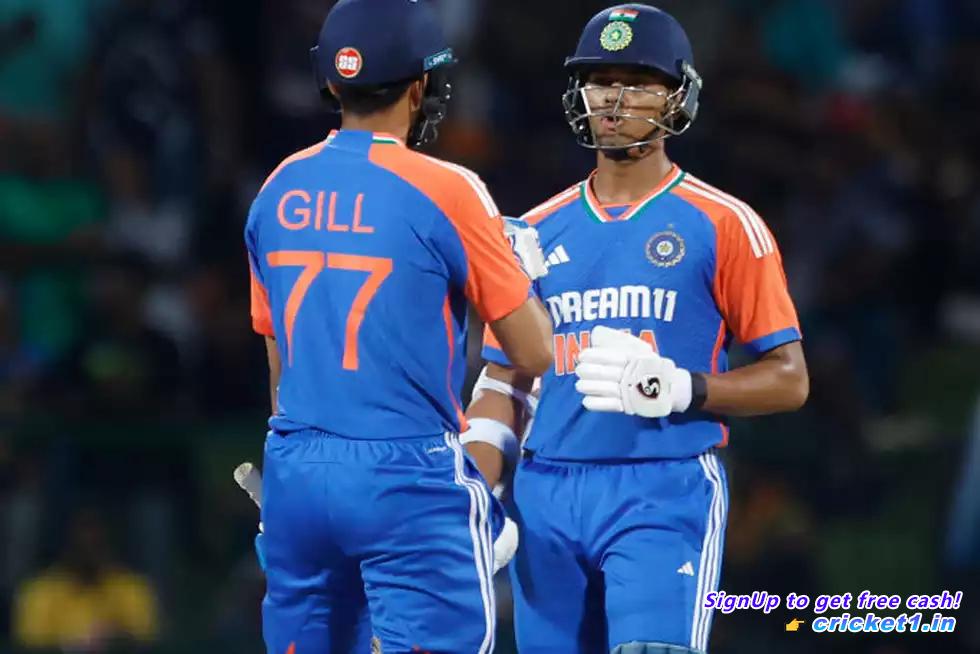
At the end of the record 617-run Test series against England, Yashasvi Jaiswal found himself under considerable stress. Despite what most observers missed, he saw that he had failed to seize the last two opportunities in Indian colors before the selection for the 2024 T20 World Cup was finalized. Scores of 37 and 57 might be respectable performances in general, but for Jaiswal, they were only fleeting starts that did not translate into big scores.
During IPL 2024, as the emerging star of Rajasthan Royals reiterated his focus with “sirf runs banane hai” (just need to score runs), the franchise relieved him significantly from his sponsorship obligations. Whether this liberty reflected entirely in his mindset remains his secret, but his performance with the bat certainly showed a dramatic change. He went from being scratchy, desperate, and short of runs to far from the player whose seamless bat swing had dismantled attacks across formats the previous year. Jaiswal took seven innings before regaining his form, despite his team’s early successes.
The competition for a spot in the Indian team was intense, with numerous contenders but no apparent openings. Fast forward four months, and the landscape has drastically changed. Opportunities have surfaced, and both Jaiswal and Shubman Gill have been given the first chance to fill the vacant positions.
Just a day before India’s initial T20I match against Sri Lanka, the newly-appointed captain Suryakumar Yadav emphasized that under the new leadership, “only the engine has changed; the rest of the bogeys are still the same.” This echoed the message he had conveyed to his teammates who had excelled in the shortest format over recent years: that while the coaching staff might come and go, the successful practices should remain consistent.
This assessment is intriguing for several reasons. Firstly, with a new captain and coach at the helm, there appear to be some significant changes. For example, employing the strategy of playing four frontline bowlers alongside part-time and all-round options in the XI—a tactic used successfully by Gautam Gambhir with the Lucknow Super Giants and Kolkata Knight Riders—is being adopted. Additionally, the tactic of maintaining a left-right combination throughout the top eight is also being adhered to, reminiscent of Gambhir’s past strategies.
An obvious question arises: how could the bogeys remain the same when three veteran players, who had long been the faces of India’s T20I cricket, have retired?
The first two bogeys in this dynamic train have been replaced, with Jaiswal and Gill stepping in for Rohit Sharma and Virat Kohli.
. The explosive power they showcased on Saturday night during the powerplay demonstrated precisely why Jaiswal felt he had a chance to push for a spot in the Indian XI, despite the seemingly remote chances.
Right off the bat in Pallekele, Jaiswal showed his intentions by pulling Dilshan Madhushanka for a boundary. At the other end, Gill, intending to inject more ‘intent’ into his game, was in fine form. With a mild punch caressed through backward point, a lazy loft over mid-off, a nonchalant whip over mid-on, a gentle rolling of the wrist through square leg, and a couple of deft touches off the bat face, he secured multiple boundaries.
Gill responded effectively to length deliveries outside off, teasing him to slash, by employing controlled punches. When the bowlers adjusted their lines closer to his body, his timing and placement remained impeccable. Although he was eventually outsmarted by a slower ball, by then he had illustrated his concept of ‘intent’ with precision.
Conversely, Jaiswal employed a more conventional approach with big swings of his bat, dismantling Asitha Fernando and Maheesh Theekshana. In the initial 35 balls of the innings, they propelled India to 74 runs. However, both batsmen were dismissed shortly thereafter.
Although their innings and partnership were not decisive in determining the match’s outcome, the pace they set during the Powerplay provided a foundation for the middle order to build upon—a crucial responsibility they are expected to shoulder going forward.
With Rohit and Kohli having retired from the shortest format, backups and other emerging players eagerly vying for those coveted spots, it was no surprise that the first opportunity to replace them went to Gill and Jaiswal. Their performances in Zimbabwe and Sri Lanka have presented the new era of India’s T20 cricket with early indications that Gambhir is likely to back his batsmen to take an aggressive approach, supported by a deep lineup.
With solid early performances, Gill and Jaiswal have shown that they are prepared for the challenge ahead. As India embarks on this evolved path in T20 cricket, the management possesses ample options should any adjustments be necessary. For now, though, Gill and Jaiswal, along with the team, can breathe a bit easier knowing that their journey is on track, with the new ‘bogeys’ running smoothly under pressure.

